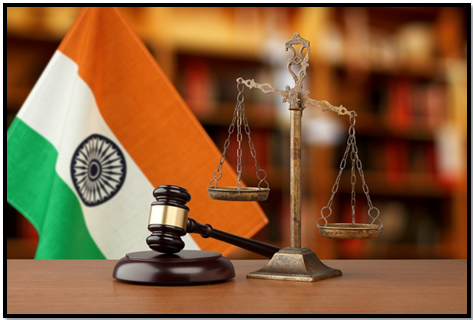“THE BATTLE OVER JUDICIAL AUTONOMY AND EXECUTIVE OVERREACH”
Syllabus:
GS-2- Separation of power between different organs of government , Independence of Judiciary
Focus :
The article focuses on recent Supreme Court decisions that challenge state overreach and their implications for judicial independence. It highlights the coordinated digital campaigns aimed at delegitimizing the judiciary, disguised as calls for reform, and stresses the need for public trust, transparency, and maintaining the judiciary’s autonomy against executive control.
Source - TH
Judicial Decisions and Political Repercussions
Electoral Bonds Declared Unconstitutional:
- On February 15, the Supreme Court ruled against the anonymity of electoral bonds.
- The decision emphasized that the “right to know supersedes anonymity.”
- The judgment was a setback for the ruling BJP, which had benefited from electoral bonds.
- This ruling was seen as a challenge to state excesses and a move towards transparency.
Interim Bail for Arvind Kejriwal:
- On May 10, the Supreme Court granted interim bail to Delhi Chief Minister Arvind Kejriwal.
- The Court rejected the notion that this decision conferred any special status to politicians.
- This judgment countered efforts to politically neutralize opposition figures.
- It underscored the principle that the law applies equally to all citizens.
Bail for NewsClick Founder:
- On May 15, the Court granted bail to Prabir Purkayastha, Editor-in-Chief of NewsClick.
- The Court noted that the grounds of arrest were not communicated in writing, invalidating the arrest.
Perception of Judicial Courage:
- These judgments are seen as a healthy sign for constitutional democracy.
- They reflect judicial autonomy and a functioning system of checks and balances.
- Legal scholars view these decisions as a break from perceived judicial abdication.
- The timing during an election year has added to their significance.
| Constitutional Provisions Ensuring the Independence of the Indian Judiciary
1. Separation of Powers:
2. Security of Tenure for Judges: Judges of the Supreme Court and High Courts are appointed until the age of 65 and 62, respectively.
3. Fixed Salaries and Benefits 4. Appointment Process:
5. Prohibition on Practice After Retirement:
6. Jurisdiction and Powers:
|
A Sustained Campaign Against the Judiciary
Digital Media Influence:
- Digital media amplifies every significant judicial decision, especially those with political implications.
- The Supreme Court has facilitated live tweeting and streaming of proceedings.
- Legal reporting platforms have integrated court activities into social media streams.
- This has led to increased scrutiny and commentary on judicial decisions.
Attacks on Judicial Legitimacy:
- There is a trend of abusing the judiciary, viewing it as a colonial imposition or rooted in western liberalism.
- Digital campaigns exploit public frustration over delayed justice, judicial nepotism, and lack of diversity.
- These attacks often present themselves as calls for reform but aim to undermine judicial independence.
- The ultimate goal appears to be achieving absolute executive control over the judiciary.
Research Findings on Digital Campaigns:
- Researchers Joyojeet Pal and Sheyril Agarwal highlighted spikes in online criticism of the judiciary.
- Their study showed that attacks increase when the Chief Justice takes positions against the government.
- The study suggested that purging liberal-leaning justices is seen as essential for institutional capture.
Impact of Online Campaigns:
- Coordinated campaigns aim to delegitimize the judiciary through ridicule and misinformation.
- Examples include the backlash against the Juvenile Justice Board’s decision to grant bail in a controversial case.
- Such campaigns ignore the complexities of legal procedures and the role of other state actors.
- The goal is to shift public opinion towards favoring direct executive control over the judiciary.
The Way Forward for Judicial Independence
Acknowledging Threats to Judicial Independence:
- Recognize the significant role of television and social media in shaping public norms.
- Publicly acknowledge and address threats to the judiciary’s independence.
- Scrutinize proposals disguised as judicial reforms to ensure they do not undermine judicial autonomy.
Restoring Public Trust:
- Public trust in the judiciary must be restored by improving service delivery and diversity in appointments.
- The judiciary should strengthen its counter-majoritarian role to uphold constitutional rights.
- Honest and consistent public communication about judicial processes is essential.
Countering Online Misinformation:
- The legal fraternity must actively dispel misinformation and expose bad faith propaganda.
- This requires a concerted effort to provide reasoned explanations of judicial decisions and processes.
- Building a broader civic vision that transcends narrow political interests is crucial.
The Judiciary as a Protector of Rights:
- The public must view the judiciary as an imperfect but essential guardian of constitutional rights.
- The judiciary must be seen as a protector against executive overreach and not merely a political tool.
- Efforts to control the judiciary should be resisted to maintain a balanced and fair democratic system.
Source:The Hindu
Associated article:
Mains Practice Question :
GS-3
“Critically analyze the recent judicial decisions in India that challenge state excesses and their implications for the independence of the judiciary. Discuss the impact of digital campaigns on the perception of judicial legitimacy and suggest measures to protect judicial independence in the face of such challenges.” (250 words)




